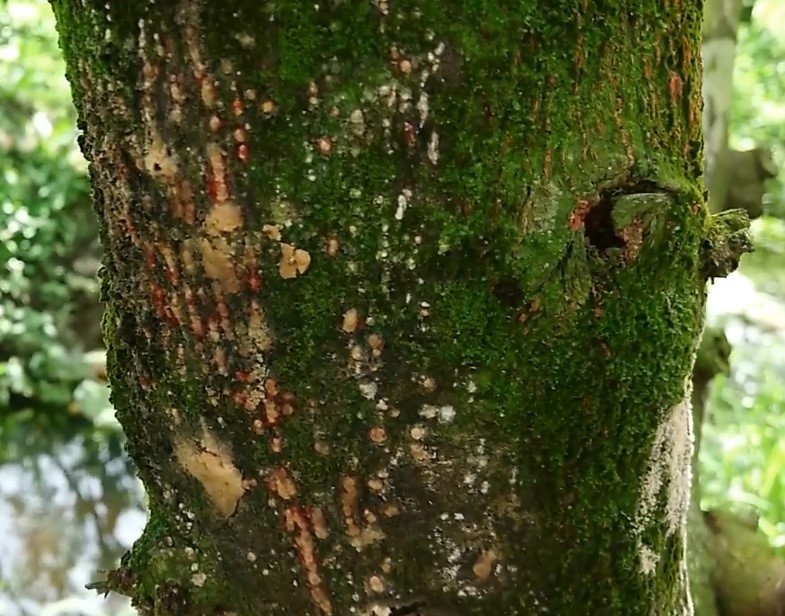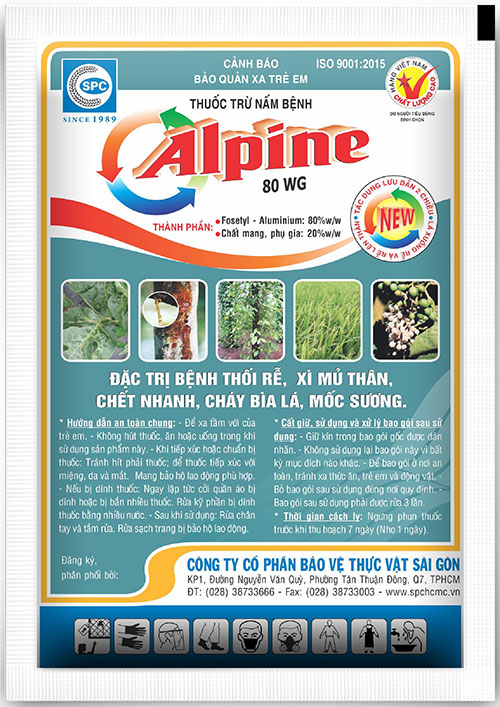|
Prevention of disease for thai jact fruit
08/12/2021
How to prevent and treat root rot and gummosis disease on Thai jack fruit trees in the Mekong River Delta Currently, the Thai jackfruit variety is growing very quickly, especially in the southern provinces, especially in the Mekong River Delta, and many farmers get rich quickly by growing this variety, because prices have always been high and stable in recent years. The rush to plant Thai jackfruit did not follow the planting process, leading to many inadequacies such as the appearance of many pests and diseases, causing difficulties for gardeners. Root rot and gummosis diseases is one of the problems that farmers are concerned about because it can kill trees, reduce yield as well as commercial quality of fruit:
HARMFUL ACTIVITIES: The disease occurs on jackfruit orchards that are too wet and there are many types of pests that suck the sap, causing wounds and are a good opportunity for the Phytophthora sp fungus Intrusion. The disease manifests in the root area with many ulcers, fluid from the inside leaked out, the bark of the root area is rotten in large patches, the surface of the wood layer is wet and black. Leaves yellow, fall and the tree dies. Often when detected, the disease is in a severe state, difficult to treat. PREVENTION MEASURES: The most effective way to prevent this is to plant trees on high, well-drained soil. Clean the garden, collect the stems, branches, leaves and especially the roots of old plants in the garden, especially diseased ones. - Balanced fertilization, with diseased gardens need to reduce the amount of nitrogen fertilizer. If the disease is severe, it is possible to stop applying nitrogen fertilizer completely, wait until the disease is over, then apply nitrogen again, and at the same time apply additional phosphorus and potassium fertilizers. - Protect natural enemies to limit the density of harmful pests, when necessary, use selective chemical products to spray. - Check the orchard regularly to detect diseases early when they have not spread. Use a splitter to scrape off all the bark and clean the diseased area (remember to collect the diseased bark that has just been scraped from the garden and destroy). Then use 30 grams of Alpine 80 WG, or 50 grams of Mexyl MZ 72 WP mixed in a liter of water use a broom or paintbrush dipped in pesticidal water to brush the affected area and the surrounding area - Spray and combine water preventively around the root with products such as Apine 80 WG, Mexyl MZ 72 WP. It can be sprayed or watered again after 7 days if the disease is severe or periodically sprayed and watered with newly planted gardens when the plants are about five years old DOSAGE FOR USE: - 100 grams of APINE 80 WG mixed with 30 liters of water to spray wet evenly on stems, branches, leaves or water for 10-15 roots. - 100grams of Mexyl MZ 72 WP mixed with 25 liters of water to spray wet evenly on stems, branches, leaves or water for 10 roots. - It is possible to combine spraying and watering roots, or alternate between Alpine 80 WG and Mexyl MZ 72 WP.
|
To prevent, in addition to plowing and burying weed seeds, collecting weed stalks and stumps left after tilling the land to burn, not letting weeds produce seeds in production fields, etc., the use of chemical products is still a measure. optimal because of its ability to thoroughly kill weeds, reduce labor and take advantage of more time than manual weeding.
Miner has the scientific name Phyllocnistis citrella Staint., family Phyllocnistidae, order Lepidoptera. The miner occurs in many countries in the tropics and subtropics. The main host of the miner is the citrus family - Rutaceae. In addition, the miner also attacks mangosteen and some other plants.
Adult is a small planthopper, with a body 2-3 mm long, the whole body is ash gray, slightly greenish, the wings are opaque with many small brown spots.Eggs are oval, 0.3 mm long, have a pointed end and are attached directly to the leaf surface, leaf axils.
Green bugs specialize in the fruit of citrus groups (oranges, tangerines, lemons, grapefruits, kumquats...), some people call them orange bugs, or orange suckers. Their scientific name is Rhynchocoris poseidon or Rhynchocoris humeralis.
In Vietnam, yellow leaf curl disease is very common on papaya trees, especially the disease is often severe in areas of high and continuous planting, areas with hot and arid climates. The disease has significantly reduced the yield and quality of papaya. Gardens that are infected early when the plants are young may not yield. However, up to now, many gardeners still do not know the cause and how to fix it.
Spider mites are common pests on citrus trees, especially in hot and dry climates that are suitable for spiders to grow and cause severe damage.The group of harmful spiders is usually very small in size, unlike the natural enemy spiders.
This group includes species that are generally very small in size, causing damage by sucking plant sap (on leaves, fruits, branches, stems).
There are many species of mealybugs present on the group of Oranges,Tangerines,Grapefruits and Lemons (Citrus), which can be divided into 2 groups:
+ Group of sticky mealybugs with common varieties such as Lepidosaphes, Aonidiella, Coccus and Saissetia.
+ Group of flower mealybugs with common genera and species such as Pseudococcus, Planococcus and Icerya purchasi.
Dry branches and berries disease often appear to be common damage on coffee gardens during the rainy season. The disease causes death of branchs, dry fruit, severely affects the canopy structure and coffee yield if not paid attention to prevention.
Pink disease commonly causes diseases on rubber plantations in the rainy season, especially on garden from 4-8 years old. This year, rubber has to go through a period of severe drought, weakening the tree, so now in tnshe rainy season it is easy to get infected. Therefore, it is necessary to pay attention to good management to avoid affecting the garden.
In recent years, the area of citrus has been expanded because it is a fruit tree with high economic efficiency. However, in order to sell at a high price, not only in quality but consumers also require the external beauty of the fruit, so pest management on citrus is a matter of great concern to farmers. The hot season is a favorable condition for thrips to develop and cause damage, affecting the commercial value of fruit.
- Headquarters
- SAIGON PLANT PROTECTION JOINT STOCK COMPANY
- RQ 1, Nguyen Van Quy St., Tan Thuan Ward, HCM City
- Tax code: 0300632232
- Tel: (028) 38 733 295 - 38 732 077
- Fax: (028) 38 733 003 - 38 733 391
- Website: www.spchcmc.vn - Email: info@spchcmc.vn
- SAIGON PLANT PROTECTION COMPANY
- SAIGON PLANT PROTECTION JOINT STOCK ENTERPRISE
- Lot C1-C3 Hiep Phuoc Industrial Park, Hiep Phuoc Commune, HCM City
- Tel: (028) 3873 4089 - Fax: (028) 3873 4086
- Affiliated Unit
-
- Quick Links
- Home
- About us
- Career Opportunities













